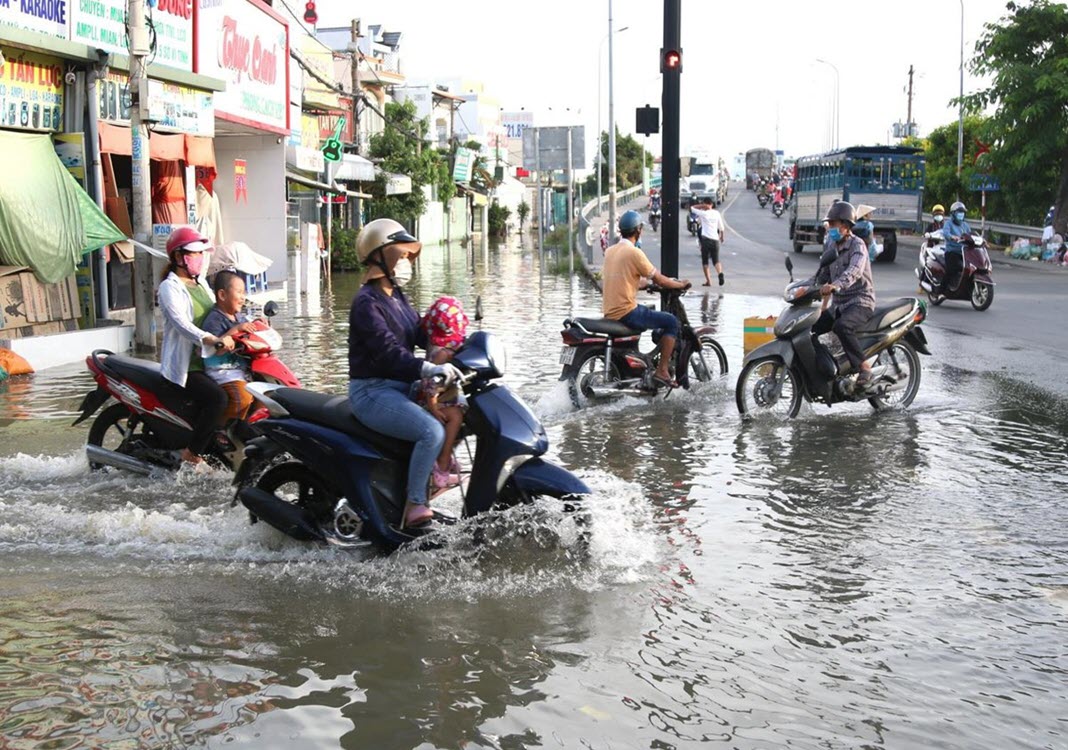HCMC – Two colossal tidal valves weighing 460 tons in total were installed at the Cay Kho floodgate in HCMC’s Nha Be District, part of the VND10-trillion anti-flooding project, on August 22.
The Cay Kho floodgate is built on the Can Giuoc River, connecting Binh Chanh and Nha Be districts, the local media reported.
Nguyen Tam Tien, general director of Trung Nam Group, the investor of the mammoth anti-flooding project, said valves were made at a factory ashore and were transported to the Cay Kho floodgate by a barge. The job was done by foreign experts and local engineers.
It took 70-90 days to install a valve, Tien said, adding that six floodgates of the anti-flooding project must be closed at the same time to ensure the project’s effectiveness.
Trung Nam Group will provide a warranty period of five years for the project instead of three years as committed in a contract signed with the municipal government. If it is chosen as the operator of the project, it will provide warranty services permanently.
Tien said the project will be completed at the end of this year if the city hands over the site this month.
Witnessing the valve installment, HCMC Vice Chairman Vo Van Hoan said the project has faced numerous difficulties in capital, construction site and execution, leading to a delay. However, these problems have been basically addressed thanks to efforts of the investor, and the relevant departments, agencies and districts.
To ensure the effectiveness of the anti-flooding project, the municipal government has to approve a plan to operate floodgates, inspect the project to assess the investment in the project, prepare for a bidding round to choose the project manager, make a list of land lots to make payments for the investor and prepare specific scenarios to cope with possible floods in riverside areas when the project is in place.
The first phase of the anti-flooding project, which takes climate change into account, started in mid-2016. It aims to respond to climate change and control floods caused by high tides on 570 square kilometers of land along the Saigon River and in the city’s downtown with some 6.5 million residents.
The project, when in place, will help the city stabilize water levels of canals, and improve the urban water drainage and urban landscape.
The project, executed under the build-transfer model, includes six floodgates: Ben Nghe, Tan Thuan, Phu Xuan, Muong Chuoi, Cay Kho and Phu Dinh, and a 7.8-kilometer dyke system along a Saigon River section between the Vam Thuat River and the Kinh River.











